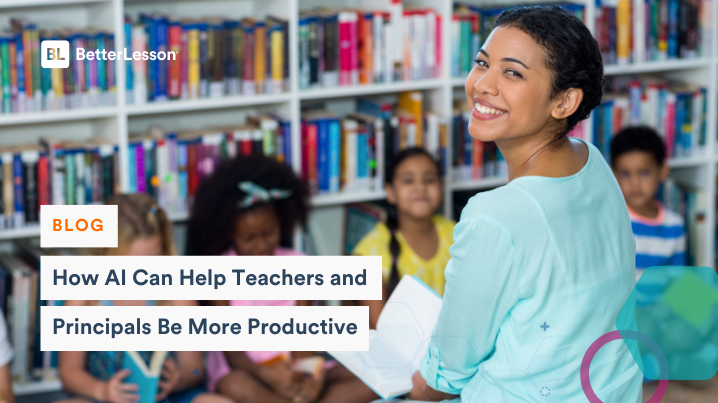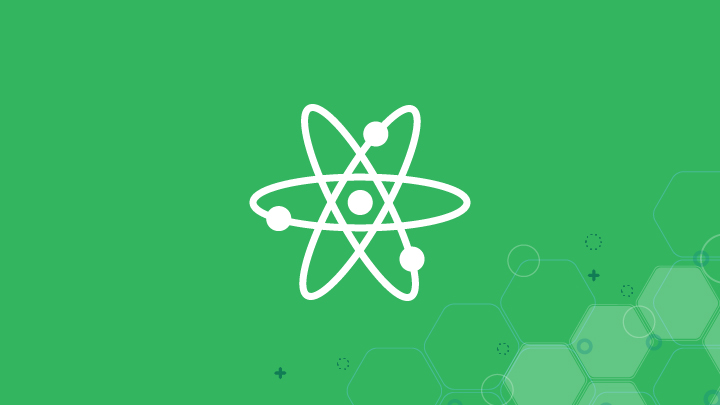Right now, teachers and school leaders all over are grappling with how and whether to use artificial intelligence (AI) in their schools and classrooms. While there are disagreements and different perspectives on its use, one thing is certain: AI has had an irrevocable impact on teaching and learning.
Still relatively new as a public utility, AI is not without valid concerns, ranging from copyright infringements to racial biases. However, AI can also be an incredibly powerful tool for efficiency in many previously time-consuming tasks.
As AI tools like ChatGPT continue to develop and proliferate, educators are well-positioned to model ethical and productive uses of the tools for their students.
In this blog post, we will break down ways in which educators and school leaders might use AI tools to maximize efficiency and focus their generations on more human-centered tasks. We will also explore guidelines and uses for students.
Educators
The to-do list of a teacher is never-ending: write lesson plans that incorporate differentiated activities and modifications for IEPs, grade and provide feedback on student work, contact parents, develop assessments, analyze student data, update gradebook, and on and on.
If teachers were able to use AI tools to accelerate some of these tasks, they could reinvest that energy in meaningful, human-centered activities. Here are a few examples:
Analyze Student Data
Data from student work – whether it’s standardized assessments, unit tests, or classwork – can illuminate trends in student learning, gaps in understanding, students who struggle with particular concepts, etc. Identifying these trends and patterns, however, can be very time-consuming.
Instead, students might input student data* into an AI tool like ChatGPT with specific prompts:
- Which students are struggling with x-concept?
- Based on this student data, what sort of differentiation strategies might be most impactful to improve student learning?
- What concepts do students struggle with most? What concepts did students seem to best understand?
Taking less time to analyze data allows more time to act on the analysis, and to implement data-driven strategies that support student learning.
*Note: To avoid student privacy issues, when inputting student data, either remove student names or use codes/pseudonyms.
Communicate with Parents
Parents and caretakers play such a critical role in young people’s learning, and teacher communication with parents and caretakers is an important piece of that. Direct contact with parents and caretakers – phone calls, in-person or virtual meetings, etc. – is an invaluable way to build trust and relationships with families. While AI cannot replace those forms of contact, there are other ways AI can support parent communication.
If, for example, a teacher wants to write a monthly newsletter for families, they might simply input key activities, dates, announcements, and ask an AI tool to generate a newsletter. The teacher can then tweak the newsletter for tone, word choice, etc.
Another way to use AI for parent communication is by generating emails. Imagine a teacher who wants to send individual emails to each student’s parents/caretakers. If the emails can be grouped into specific categories of messages, the teacher can prompt an AI tool to generate those emails and then tweak them to add any particularities for each student. Here is an example of a ChatGPT prompt that could generate two distinct email messages:
“Write two brief emails from a second-grade teacher reaching out to parents. In one message, explain that the parent’s child is struggling with reading comprehension and offer 1-2 strategies for how the parent might support their child’s reading skills. Be sure to include praise for their child’s efforts in class. In another message, explain that the parent’s child is excelling in reading comprehension and encourage the parents to offer high-level reading for their child. “
Develop Lesson Plans
Writing standards-aligned lesson plans that utilize differentiation strategies and incorporate any necessary accommodations takes an enormous amount of time. From writing original lesson plans to offering differentiation strategies for existing lesson plans, AI can be a huge support for lesson planning.
If students are struggling with a particular concept, teachers could use AI to generate ideas for different ways to teach that concept. Here is a prompt a teacher might use: My fifth-grade students are struggling with long-division. Provide three specific strategies for teaching long division. For each strategy, write student-friendly directions for an activity to practice the strategy and include an I Do / You Do / We Do statement.
Another way teachers can use AI for lesson planning support is to move from the macro to the micro. For example, a teacher might develop a broad unit plan that includes the duration of the unit, relevant academic standards, key concepts, and overarching questions. The teacher could input that original unit plan into an AI tool and ask it to develop four weeks’ worth of lesson plans that align with the unit plan by asking.
School Leaders
The responsibilities of a school leader are complicated and multifaceted: hiring and training new teachers, writing and maintaining the school budget, communicating with parents and families, and much more. Similar to educators, if school leaders were able to gain back time by utilizing AI to jumpstart tasks or generate ideas, they could invest their time and energy back into their teachers, school culture, and community.
Here are some ways that a school leader might use AI tools:
Create Schedules
Creating school schedules is a complex task. There are class blocks, prep periods, lunch, transition time between classes, etc. On top of this, there are often particular considerations when creating schedules: ensuring class sizes stay below a particular threshold, aligning prep periods by content area, etc. After inputting all of those considerations, ChatGPT or other AI tools can help generate options for schedules, making sure that school leaders aren’t starting from scratch, which could save hours of time.
Develop Common Assessments
Common assessments are useful for aligning teaching strategies and maintaining consistency in feedback on student work. School leaders can use AI to develop common assessments across grade levels and content areas. Department and/or grade level leads could then give input to offer edits and tweaks to ensure alignment with their curriculum.
Assessing writing, for example, can be a particularly subjective process. School leaders might use AI to develop common writing rubrics for each grade level to ensure that teachers are aligned in their writing instruction.
Teacher Mentoring
Teacher mentoring plays a huge role in improving early-career teacher retention and cultivating collaboration and professional relationships. Effective mentoring also takes a lot of capacity. While AI cannot replace human-to-human mentoring, it can streamline the process and provide useful resources to the mentors.
To start, teachers might use AI to generate the most effective and efficient mentor-mentee pairings based on various data points: teacher schedules, early-career teachers’ challenges and seasoned teachers’ strengths, etc.
Once mentor-mentee pairings are made, the burden of mentoring is often placed solely on the mentor. Instead, school leaders could use AI to generate mentor plans for each pairing. Such a prompt might look like this: Ms. Martinez, an experienced elementary school science teacher, is mentoring Mr. Smith, a first-year elementary school science teacher. Mr. Smith is struggling with utilizing effective classroom management techniques and developing engaging lesson plans. For example, in Mr. Smith’s class, students make up ~20% of classroom discourse, while Mr. Smith makes up ~80%. Write an eight-week mentoring plan for Ms. Martinez to use as she supports Mr. Smith. During those eight weeks, Ms. Martinez and Mr. Smith will meet once/week for 30 minutes. The plan should include specific goals and strategies aligned to each goal. The plan should also include a brief agenda for each of the eight mentor meetings.
Providing mentors with such resources and guidance offers them the capacity to engage in the mentoring process more fully, ultimately offering more strategic and targeted support to early-career educators.
Students
Many students are already using AI tools for school work. The question with which school leaders and teachers need to grapple isn’t whether students should use AI but when and how they use AI. The answers to that question depend greatly on grade level, content area, and access to technology. However, here are some general ideas and considerations for student use of AI.
Create Clear AI Guidelines
Students need clear guidelines for how and when they can use AI. Without such guidelines, students may (knowingly or unknowingly) use AI unethically, teachers and students might have conflicts over the use of AI, and there may be discrepancies or biases in student data across classrooms.
As mentioned, guidelines will look different across contexts; however, here are some general questions to help inform your school’s guidelines:
- When are students allowed to use AI? When are students not allowed to use AI?
- How do students need to disclose their use of AI?
- What skills do students need to learn to use AI ethnically? Who is responsible for teaching those skills?
- How is AI incorporated into our academic dishonesty/plagiarism policy?
Generate Feedback on Student Work
One way that students might use AI in the classroom is to generate feedback on their own original work. For example, if a student writes an essay, they might input their essay into a tool like ChatGPT and ask for specific feedback: Give me three ways I can improve the supportive details in my essay. Students can then engage in a revision process based on this feedback and write a reflection on whether the feedback the AI tool generated was useful.
Similarly, in a math classroom, if students are struggling with multi-step concepts, each student could input their answers and detail their process into an AI tool and ask it to break down where they are making mistakes and how to correct them. Then, students can write a reflection about which step(s) they misunderstood and what they learned from the AI feedback. Teachers could use those student reflections to develop targeted support for students.
Identify Bias in AI
AI is not without its biases, particularly as we think about content areas that rely more on subjective interpretations: History, English Language Arts, Art, Social Studies, etc. Teachers and students can input questions into an AI tool that aligns with their unit of study. In an English Language Arts unit on poetry, for example, students might ask: Which poets are best known for utilizing nontraditional forms? What are emerging trends in poetry and which poets exemplify those trends? Students can then analyze the responses to those questions: Is the AI generator favoring poets who share particular backgrounds? Is the AI generator favoring poets from a particular time in history? Engaging in this process helps students to understand that AI tools are not infallible and to develop critical media literacies.
Because AI is so new, the ways we think about and engage with AI are constantly changing and evolving. Rather than reject it entirely, teachers and school leaders can advocate for its responsible and ethical use by developing clear procedures and strategies for utilizing AI in both their own professional tasks and in their teaching. BetterLesson is here to help schools navigate that process.
Schedule a call with us today to learn more about how we can offer personalized support to leverage AI and other technologies in your school and classrooms.
Get in Touch







